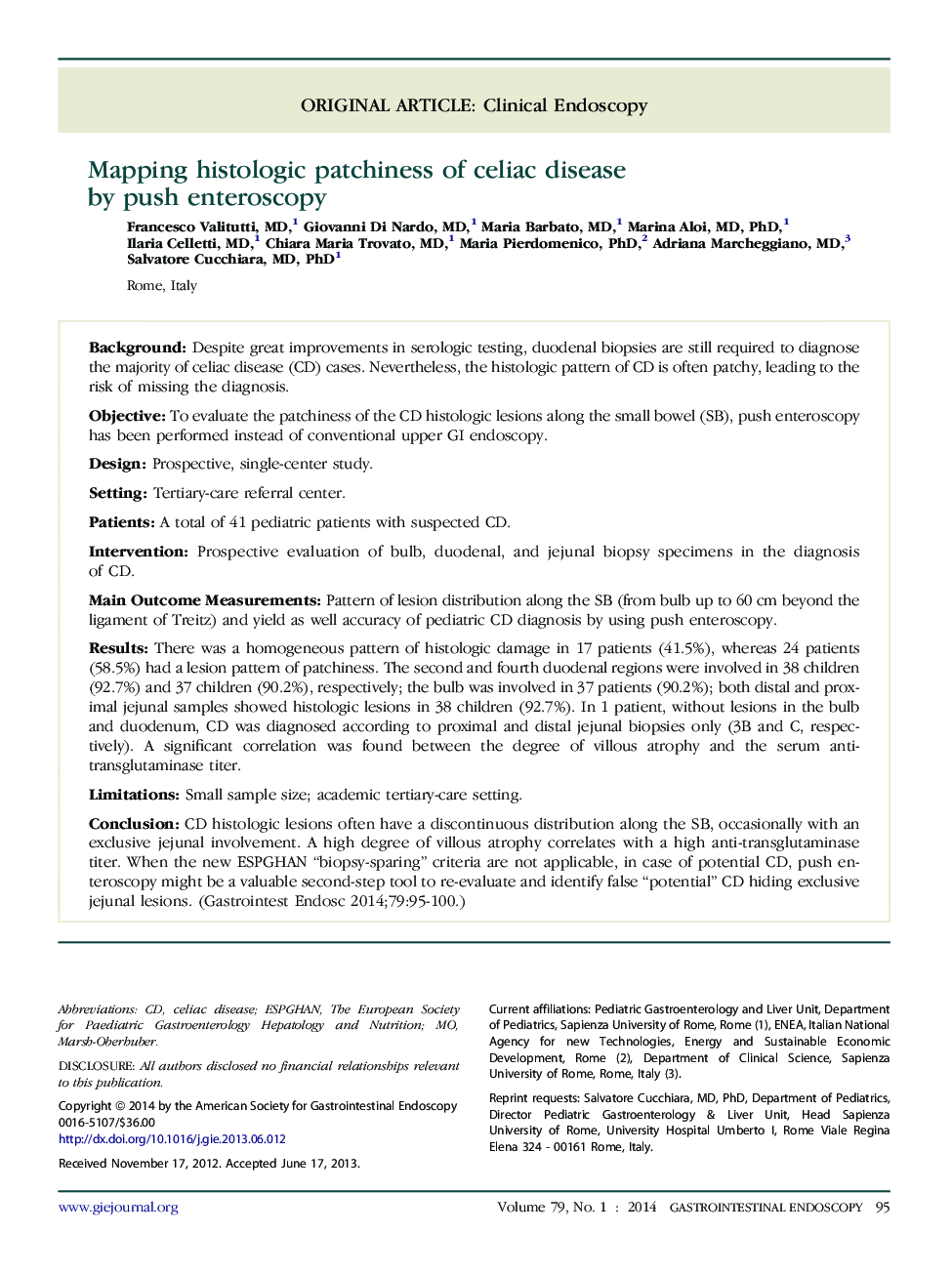| کد مقاله | کد نشریه | سال انتشار | مقاله انگلیسی | نسخه تمام متن |
|---|---|---|---|---|
| 3303786 | 1210322 | 2014 | 6 صفحه PDF | دانلود رایگان |
BackgroundDespite great improvements in serologic testing, duodenal biopsies are still required to diagnose the majority of celiac disease (CD) cases. Nevertheless, the histologic pattern of CD is often patchy, leading to the risk of missing the diagnosis.ObjectiveTo evaluate the patchiness of the CD histologic lesions along the small bowel (SB), push enteroscopy has been performed instead of conventional upper GI endoscopy.DesignProspective, single-center study.SettingTertiary-care referral center.PatientsA total of 41 pediatric patients with suspected CD.InterventionProspective evaluation of bulb, duodenal, and jejunal biopsy specimens in the diagnosis of CD.Main Outcome MeasurementsPattern of lesion distribution along the SB (from bulb up to 60 cm beyond the ligament of Treitz) and yield as well accuracy of pediatric CD diagnosis by using push enteroscopy.ResultsThere was a homogeneous pattern of histologic damage in 17 patients (41.5%), whereas 24 patients (58.5%) had a lesion pattern of patchiness. The second and fourth duodenal regions were involved in 38 children (92.7%) and 37 children (90.2%), respectively; the bulb was involved in 37 patients (90.2%); both distal and proximal jejunal samples showed histologic lesions in 38 children (92.7%). In 1 patient, without lesions in the bulb and duodenum, CD was diagnosed according to proximal and distal jejunal biopsies only (3B and C, respectively). A significant correlation was found between the degree of villous atrophy and the serum anti-transglutaminase titer.LimitationsSmall sample size; academic tertiary-care setting.ConclusionCD histologic lesions often have a discontinuous distribution along the SB, occasionally with an exclusive jejunal involvement. A high degree of villous atrophy correlates with a high anti-transglutaminase titer. When the new ESPGHAN “biopsy-sparing” criteria are not applicable, in case of potential CD, push enteroscopy might be a valuable second-step tool to re-evaluate and identify false “potential” CD hiding exclusive jejunal lesions.
Journal: Gastrointestinal Endoscopy - Volume 79, Issue 1, January 2014, Pages 95–100
